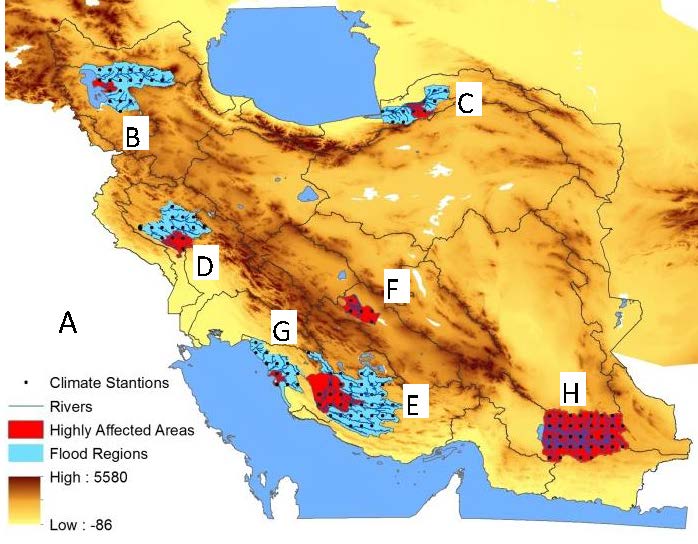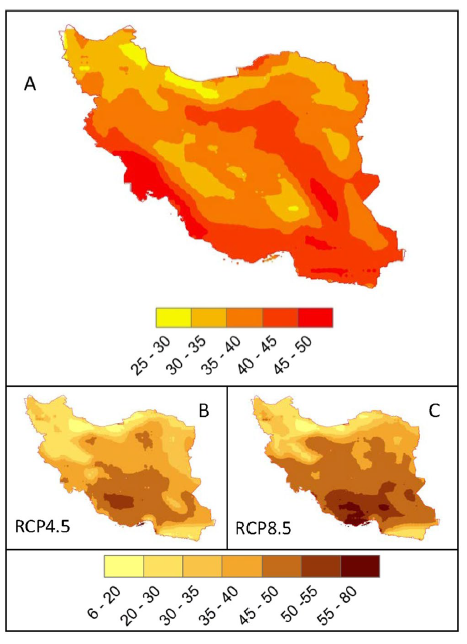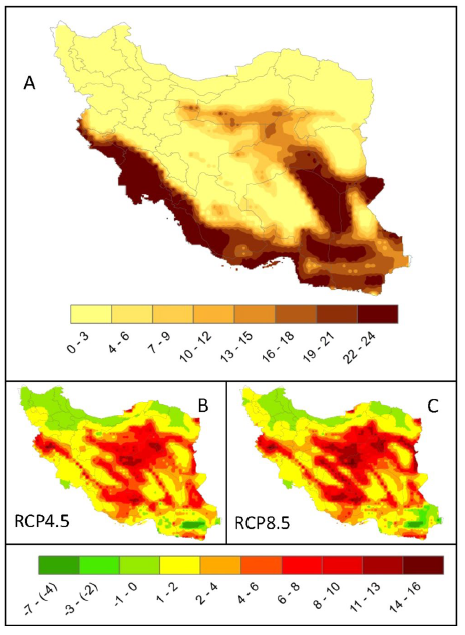Extreme Weather Events
Floods and droughts

Iran is experiencing unprecedented climate-related problems such as drying lakes and rivers, dust storms, record-breaking temperatures, droughts, and floods. Here, we use the ensemble of five high-resolution climate models to project maximum and minimum temperatures and rainfall distribution, calculate occurrences of extreme temperatures (temperatures above and below the historical 95th and 5th percentiles, respectively), analyze compound of precipitation and temperature extremes, and determine flooding frequencies across the country.
Compound Extreme events
We found that compared to the period of 1980-2004, during 2025-2049, Iran is likely to experience more extended periods of extreme maximum temperatures in the southern part of the country, more extended periods of dry (for ≥120 days: precipitation <2 mm, Tmax ≥30 °C) as well as wet (for ≤3 days: total precipitation ≥110 mm) conditions, and higher frequency of floods. Overall, the combination of these results projects a climate of extended dry periods interrupted by intermittent heavy rainfalls, which is a recipe for increasing the chances of floods. Without thoughtful adaptability measures, some parts of the country may face limited habitability in the future.

Extreme hot days for the historical
and future periods. (A) is the 95th percentile of historical maximum daily air
temperature (Tmax) (°C) (1980–2004). The shown temperatures in (A) have
occurred an average of 18 days per year. (B,C) show the number of days per year
in the future (2025–2049) where extreme Tmax exceeds the historical value of 18
days. Most regions in Iran may experience longer extreme hot days of up to 2
months per year.

Extreme hot days for the historical
and future periods. (A) is the 95th percentile of historical maximum daily air
temperature (Tmax) (°C) (1980–2004). The shown temperatures in (A) have
occurred an average of 18 days per year. (B,C) show the number of days per year
in the future (2025–2049) where extreme Tmax exceeds the historical value of 18
days. Most regions in Iran may experience longer extreme hot days of up to 2
months per year.